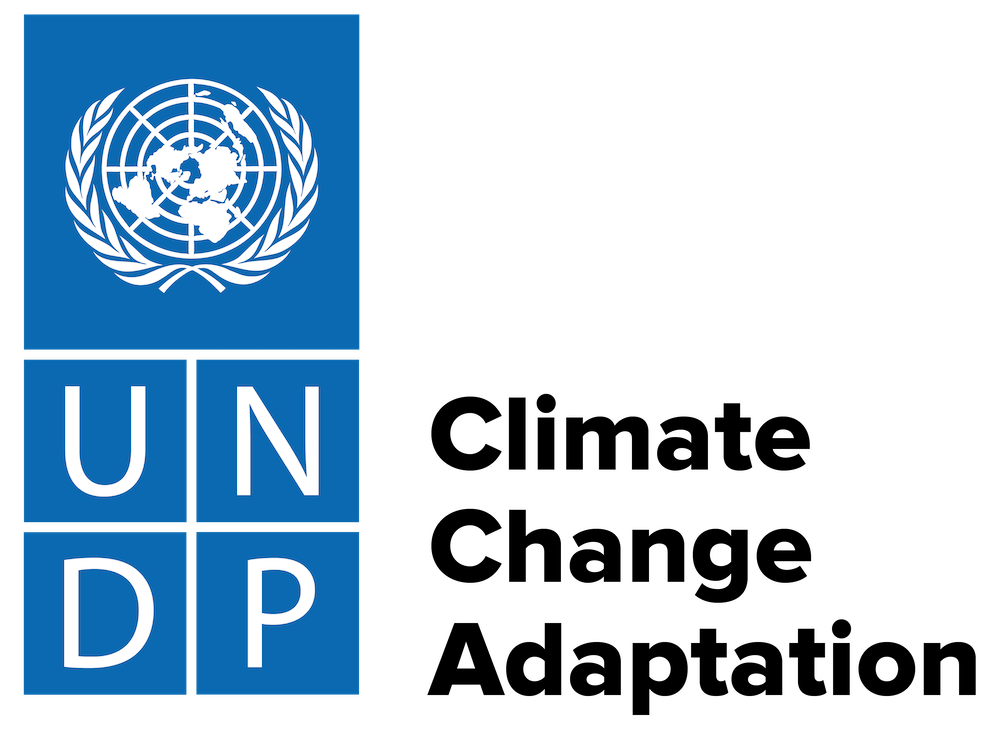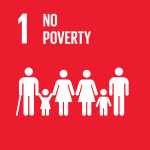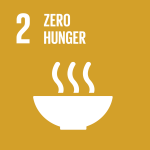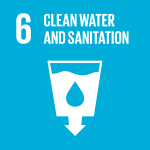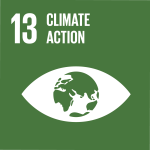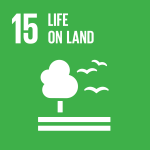
Water scarcity is a pressing challenge in Brazil’s northeastern region. Despite being home to nearly 30 percent of the country’s population, the region holds only four percent of Brazil’s total water resources. The area is also increasingly affected by land degradation, desertification and recurring droughts — conditions that threaten the livelihoods of smallholder farmers who depend on the land for survival.
In the semi-arid region of Pernambuco, one of the states most affected by water shortages, the NGO Centro de Desenvolvimento Agroecológico Sabiá (Centro Sabiá) is working with local communities to find innovative, sustainable ways to adapt. With support from the UNDP-Adaptation Fund Climate Innovation Accelerator (AFCIA), the organization is implementing a solution that combines wastewater reuse and agroforestry (farming that combines trees with crops to improve soil, water and biodiversity). The initiative aims to establish 30 new agroforests irrigated by recycled greywater systems, benefiting over 600 people — more than half of whom are women. The system is known as RAC-SAF, which stands for Reuso de Água Cinza e Sistema Agroflorestal in Portuguese — or Greywater Reuse and Agroforestry System in English.
“Our system combines two elements: water treatment and food production. It extends the water cycle by transforming wastewater into food and improving resilience to climate change.” – Carlos Magno de Medeiros, social mobilization coordinator at Centro Sabiá
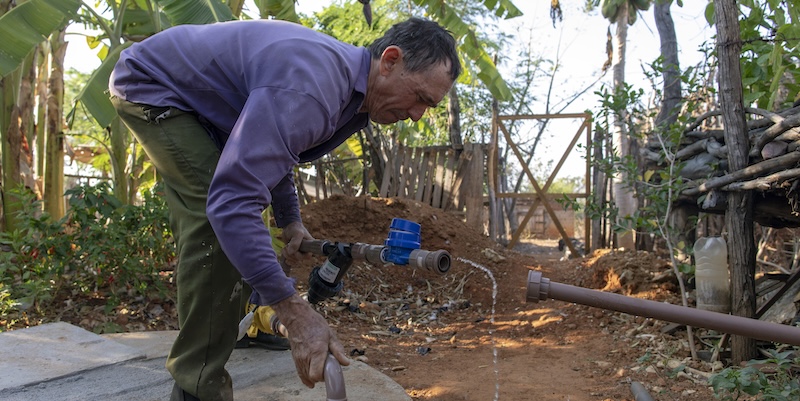
Community member sets up their RAC-SAF system. Photo: Luca Zanetti/Centro Sabiá
Turning wastewater into opportunity
The RAC-SAF model reuses household greywater — water from washing and cleaning — by filtering and redirecting it to irrigate small agroforests. Traditionally, families in the region collect and store rainwater in cisterns for household use during the dry season. Once used, this water was typically discarded. Now, through the RAC-SAF system, it is filtered and used productively, allowing families to irrigate agroforests of up to 625 square metres and filter approximately 60,000 litres of water per year.
Within these agroforests, families grow a mix of fruit trees, forage crops and native species. The plots are carefully designed in layers to optimize space and make maintenance activities such as pruning and weeding more manageable.
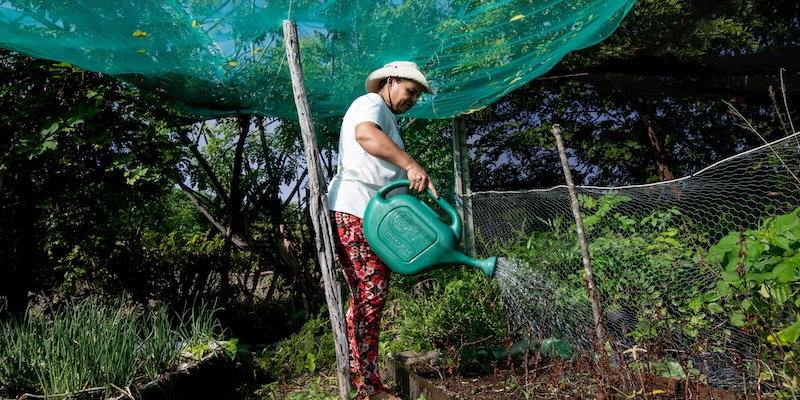
Community member waters their agroforest. Photo: Ana Mendes/Centro Sabiá
Building resilience by adapting to drought
Installing the RAC-SAF system in semi-arid conditions comes with its challenges. Dry, compacted soils make it difficult to dig the tanks needed for filtration, and during prolonged droughts, community members often have to travel long distances in search of water, delaying installation work.
Centro Sabiá has been addressing these challenges by engaging directly with families and local bricklayers to co-design practical solutions. Once the community understands the long-term benefits, they often agree to use excavation machinery to speed up installation, an option that is more efficient, though more expensive, than manual labour.
However, the investment quickly pays off. Families with these systems have greater access to water for irrigation and can save significantly on production costs. Many earn up to US$300 per month by selling fruits and other agroforestry products at local markets.
"I think people want to have access to this water reuse system because of the water scarcity here in Sertão. The water used to be thrown out in the yards at the sites, because there was nowhere else for it to go, which was very bad. Now, that same water is helping my plants stay alive. Without it, I wouldn’t have so many thriving crops.” – María José Henriques Ferreira, a local farmer
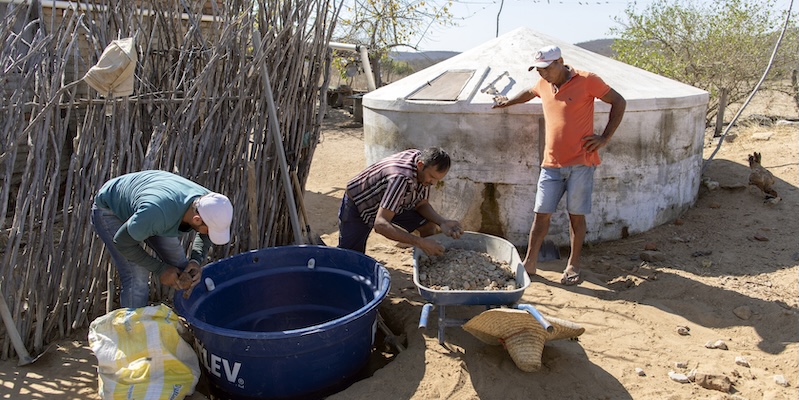
Community members install the RAC-SAF system. Photo: Luca Zanetti/Centro Sabiá
Community-led innovation
Centro Sabiá is passionate about the role of the communities in setting up and managing the systems. The system was designed with the community in mind to use local material and know-how. When the initiative began, 30 families came together to learn about the RAC-SAF system and discuss climate change, rural sanitation and the role of women and men in building resilience.
From the beginning, the project has been grounded in local knowledge and collective action. The system was co-created with the community using 95 percent locally sourced materials, making it affordable, repairable and fully adaptable to local contexts.
“All these families are building the solutions together,” says Medeiros. “Our approach recognizes and values the knowledge of family farmers and traditional communities. The system is open-source — no patents — so anyone can reproduce or adapt it freely.” – Carlos Magno de Medeiros
To ensure sustainability and wider adoption, Centro Sabiá has also partnered with the municipality of Pernambuco to explore integrating the RAC-SAF model into local water management systems.
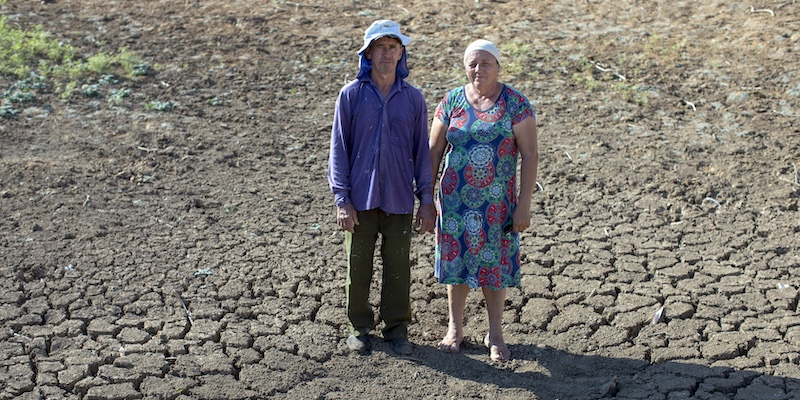
Climate change is causing additional water stress for local farmers in the semi-arid region of Pernambuco. Photo: Luca Zanetti/Centro Sabiá
Scaling up for a sustainable future
By combining wastewater management and agroforestry, Centro Sabiá’s RAC-SAF system demonstrates how innovation can emerge from local realities. The approach strengthens food and water security, enhances community resilience and creates opportunities for income generation in one of Brazil’s driest regions.
Simple, low-cost and adaptable, the RAC-SAF model holds promise for scaling up — not only across Brazil’s semi-arid regions, but also in other parts of Latin America and Africa facing similar climate and water challenges.
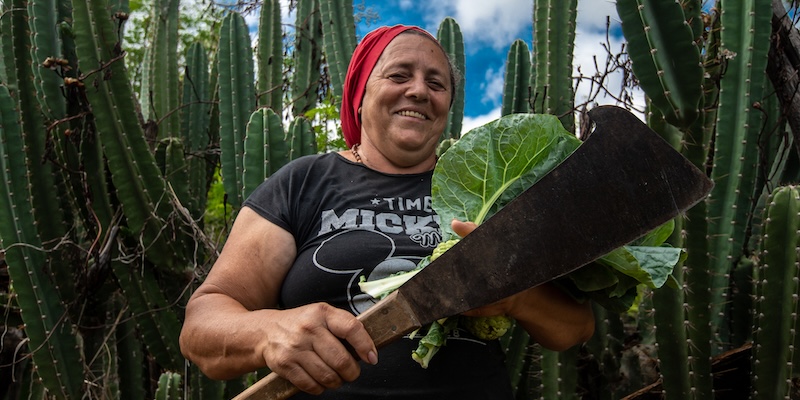
Community member surrounded by cactus. Photo: Ana Mendes/Centro Sabiá
Supported by financial contributions from the Adaptation Fund and the European Union, the UNDP-AFCIA programme has awarded 44 micro and small grants to locally led organizations across 33 countries worldwide, accelerating their innovative solutions to build resilience in the most vulnerable communities.
UNDP-AFCIA is one of two featured programmes under the Adaptation Innovation Marketplace (AIM), a multi-stakeholder strategic platform that promotes scaled-up adaptation at the local level.
